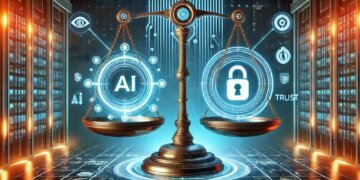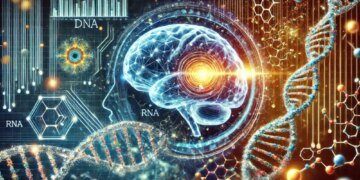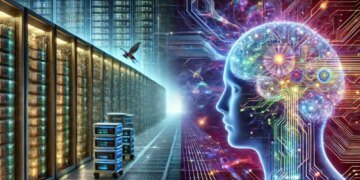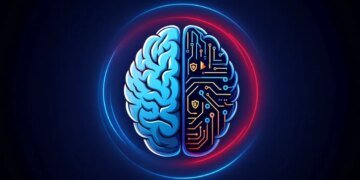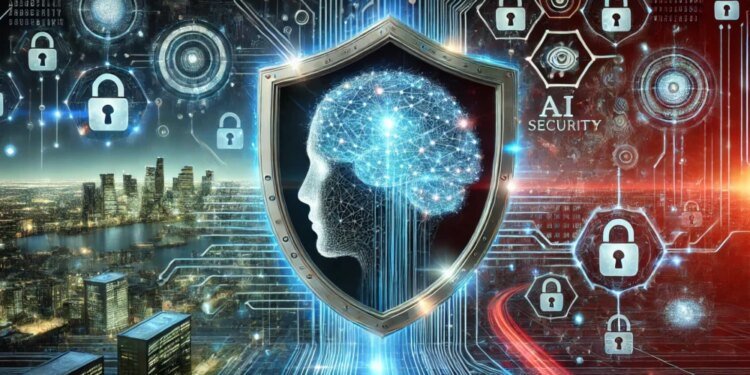Uniting Forces: How AI is Transforming Cybersecurity 🚀🔒
In today’s rapidly evolving digital arena, the fusion of artificial intelligence (AI) and cybersecurity is not just beneficial but essential for safeguarding our digital futures. With cyber threats becoming more sophisticated and prevalent, adopting AI in cybersecurity emerges as a game-changer, offering unprecedented protection capabilities.
Unpacking the Cybersecurity Landscape 🌐
Gone are the days when cybersecurity meant just antivirus installation and firewall setups. In our current data-rich and interlinked ecosystem, cybersecurity has transformed into a multifaceted discipline that demands intricate technological interventions. The primary focus? Ensuring the protection of sensitive data and preventing unauthorized access. As digital interactions grow, the stakes in maintaining robust cybersecurity measures rise exponentially.
The Role of AI in Cyber Defense 🤖
The integration of AI within cybersecurity is not merely promising—it’s revolutionary. Here’s a deeper dive into how AI is redefining the cyber defense landscape:
- Threat Detection and Prediction: AI possesses the capability to sift through massive volumes of data in real time, identifying and even predicting potential cyber threats. By employing advanced machine learning algorithms, AI systems can spot anomalies, often indicators of brewing cyber attacks.
- Automated Responses: Once a threat is detected, AI springs into action with automated solutions to promptly contain and mitigate the risks. This rapid response is typically much swifter than human intervention, offering a crucial edge in time-sensitive scenarios.
- Risk Assessment: Continuous data analysis allows AI to evaluate and assign risk levels efficiently to various cyber assets. This enables organizations to prioritize and allocate their security resources effectively, safeguarding the most vulnerable points.
Challenges in AI-Driven Cybersecurity ⚖️
Despite its advantages, incorporating AI into cybersecurity isn’t devoid of challenges. Let’s explore these obstacles:
- Bias and Errors: AI systems, predominantly machine learning models, can inherit biases from their training datasets. This predisposition can lead to incorrect threat identification or improper response strategies, potentially leaving systems vulnerable.
- Adapting to New Threats: As cybercriminals evolve, they too begin utilizing AI to construct more advanced attacks, leading to a constant battle of wits between defenders and attackers.
- Privacy Concerns: Implementing AI in cybersecurity raises legitimate privacy concerns. Large-scale monitoring efforts and data collection could infringe upon user privacy rights, demanding stringent ethical oversight.
The Road Ahead: A Symbiotic Integration 🌟
The convergence of AI and cybersecurity represents both an inevitable trajectory and an imperative necessity. As organizations navigate this path, they must forge strategies that embrace AI’s potential while proactively addressing its limitations.
Collaboration remains a cornerstone of effective AI-cybersecurity integration. Continuous synergy between AI experts and cybersecurity professionals is crucial for crafting adaptive, intelligent security frameworks that consistently outpace emerging cyber threats.
Education plays a critical role in this landscape. Nurturing the next generation of professionals skilled in both AI and cybersecurity is vital for future-proofing digital defenses. A concerted effort in education will ensure a robust workforce capable of navigating the complexities of this integrated domain.
Embracing AI in cybersecurity should not be perceived as a mere choice. It is a necessity. By leveraging the collective strength of AI technologies and human expertise, we can foster a more secure digital environment for all. In conclusion, as we stride forward in this digital era, integrating AI into cybersecurity practices holds the promise of a safer, fortified future—a future where innovation and intelligence reign supreme in the ongoing battle against cyber threats.











